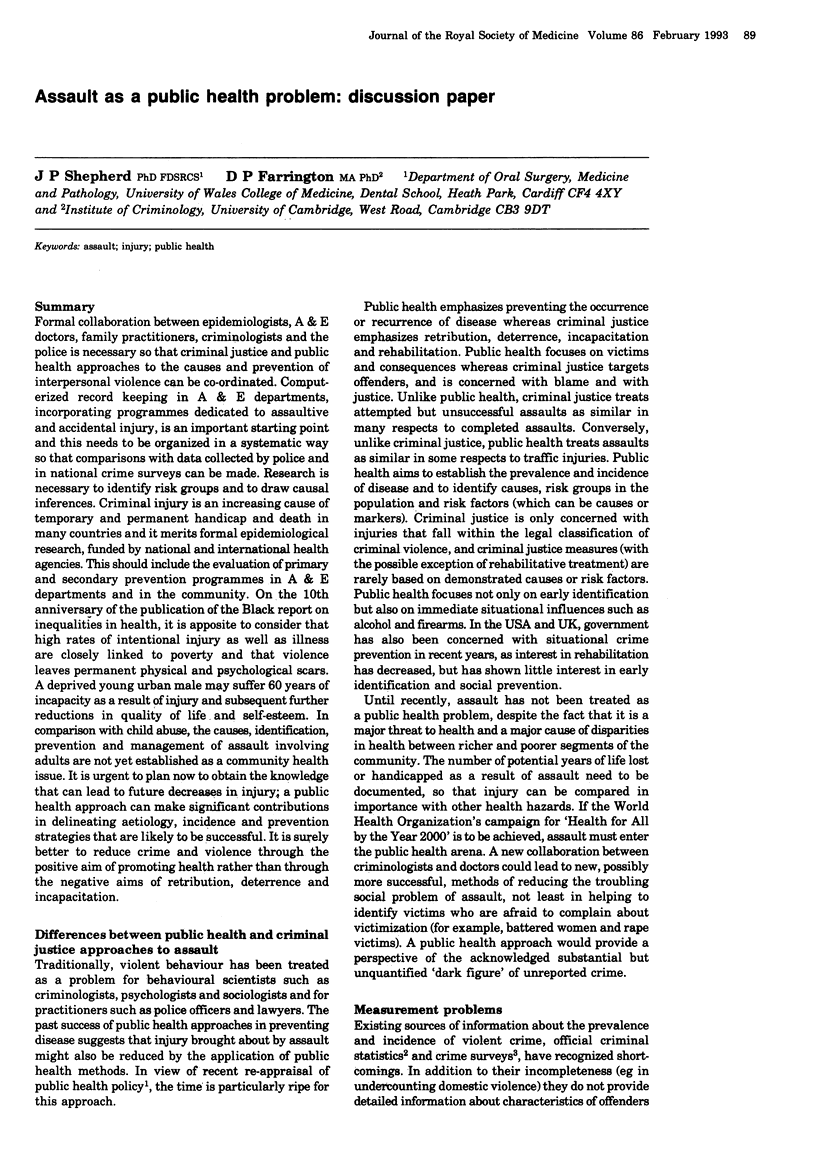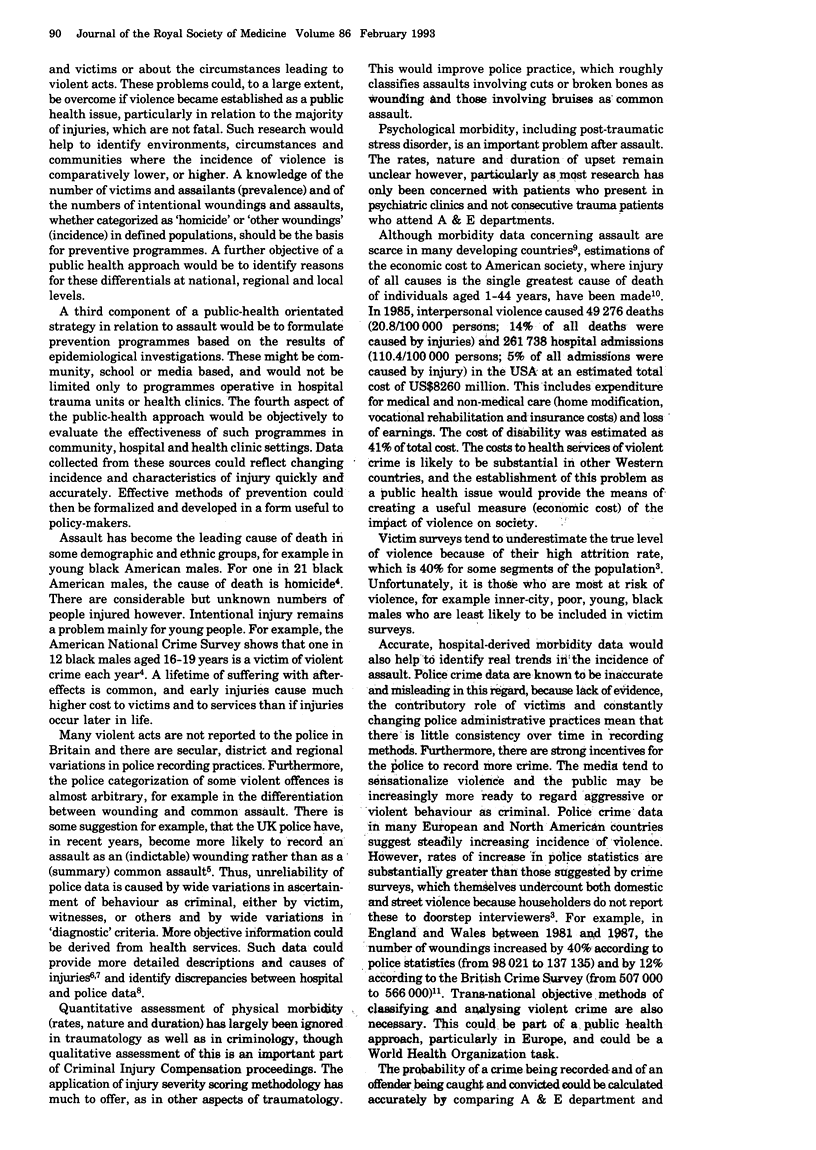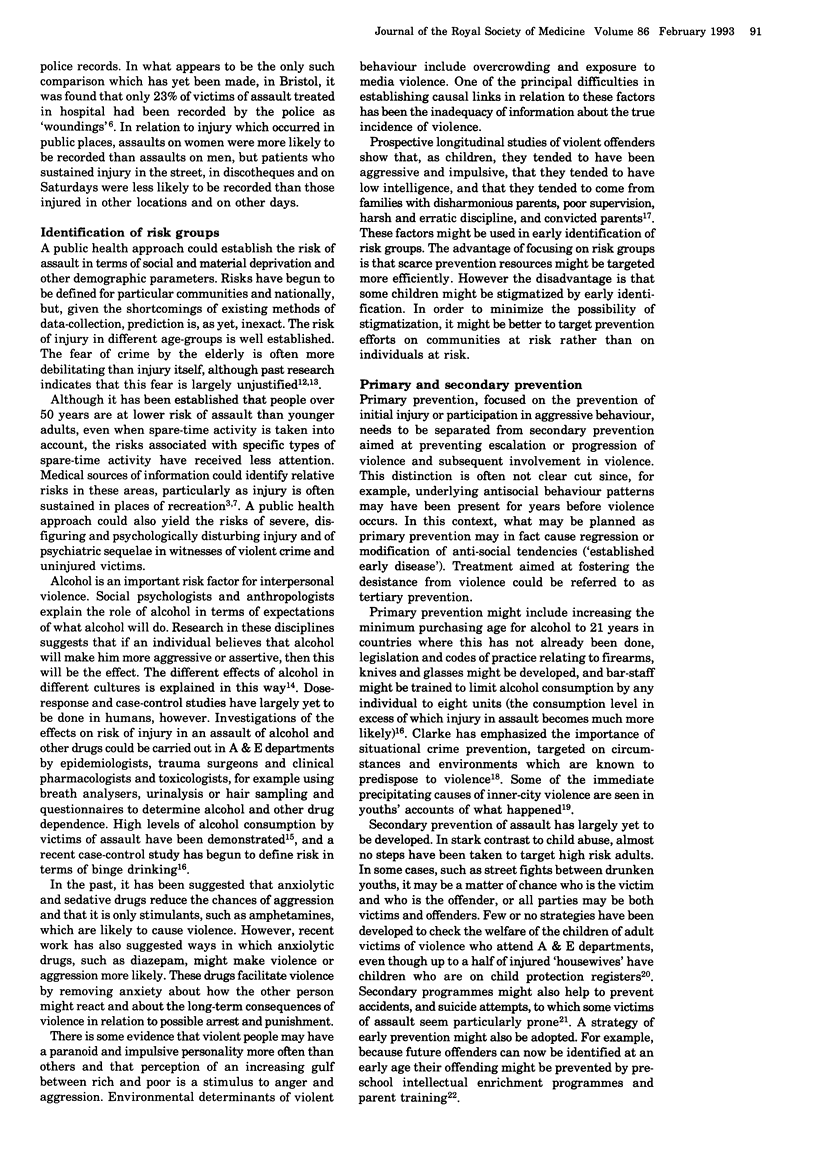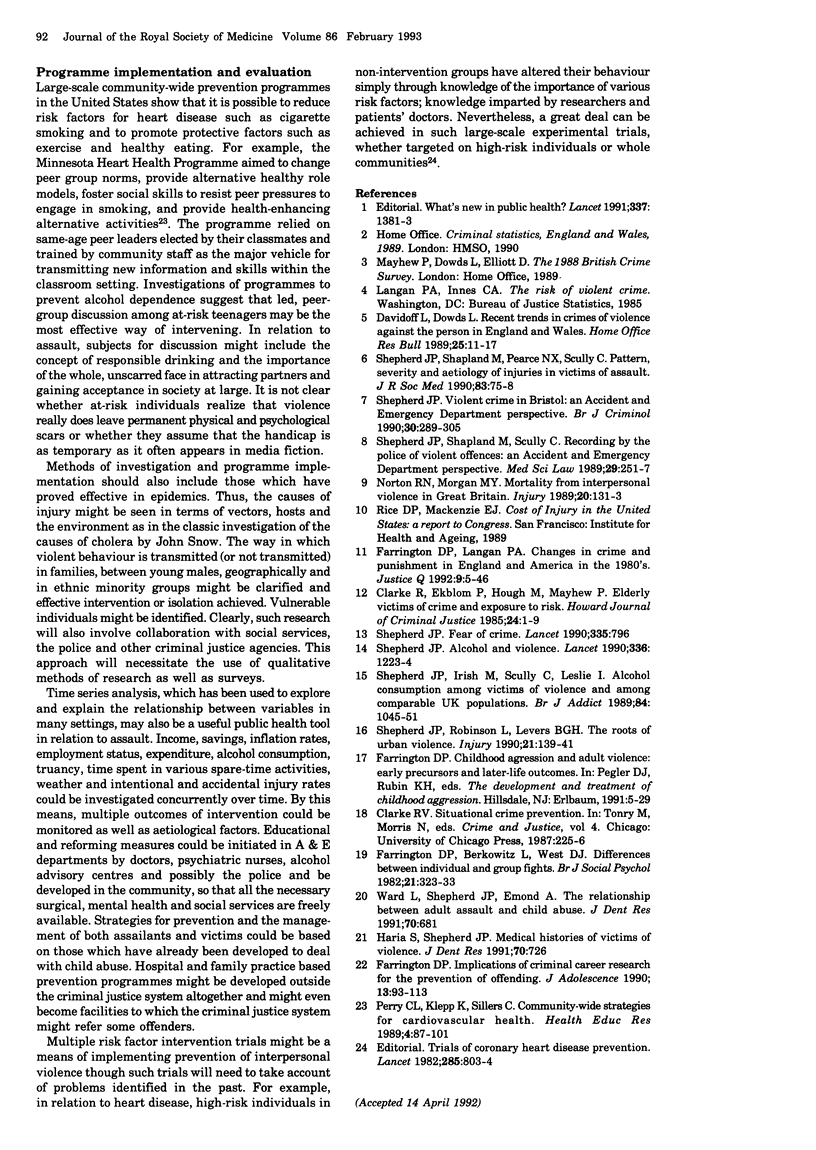Abstract
Formal collaboration between epidemiologists, A & E doctors, family practitioners, criminologists and the police is necessary so that criminal justice and public health approaches to the causes and prevention of interpersonal violence can be co-ordinated. Computerized record keeping in A & E departments, incorporating programmes dedicated to assaultive and accidental injury, is an important starting point and this needs to be organized in a systematic way so that comparisons with data collected by police and in national crime surveys can be made. Research is necessary to identify risk groups and to draw causal inferences. Criminal injury is an increasing cause of temporary and permanent handicap and death in many countries and it merits formal epidemiological research, funded by national and international health agencies. This should include the evaluation of primary and secondary prevention programmes in A & E departments and in the community. On the 10th anniversary of the publication of the Black report on inequalities in health, it is apposite to consider that high rates of intentional injury as well as illness are closely linked to poverty and that violence leaves permanent physical and psychological scars. A deprived young urban male may suffer 60 years of incapacity as a result of injury and subsequent further reductions in quality of life and self-esteem. In comparison with child abuse, the causes, identification, prevention and management of assault involving adults are not yet established as a community health issue.(ABSTRACT TRUNCATED AT 250 WORDS)
Full text
PDF



Selected References
These references are in PubMed. This may not be the complete list of references from this article.
- Alcohol and violence. Lancet. 1990 Nov 17;336(8725):1223–1224. [PubMed] [Google Scholar]
- Farrington D. P. Implications of criminal career research for the prevention of offending. J Adolesc. 1990 Jun;13(2):93–113. doi: 10.1016/0140-1971(90)90001-n. [DOI] [PubMed] [Google Scholar]
- Norton R. N., Morgan M. Y. Mortality from interpersonal violence in Great Britain. Injury. 1989 May;20(3):131–133. doi: 10.1016/0020-1383(89)90081-8. [DOI] [PubMed] [Google Scholar]
- Shepherd J. P., Robinson L., Levers B. G. Roots of urban violence. Injury. 1990 May;21(3):139–141. doi: 10.1016/0020-1383(90)90081-5. [DOI] [PubMed] [Google Scholar]
- Shepherd J. P., Shapland M., Pearce N. X., Scully C. Pattern, severity and aetiology of injuries in victims of assault. J R Soc Med. 1990 Feb;83(2):75–78. doi: 10.1177/014107689008300206. [DOI] [PMC free article] [PubMed] [Google Scholar]
- Shepherd J. Fear of crime. Lancet. 1990 Mar 31;335(8692):796–796. doi: 10.1016/0140-6736(90)90914-q. [DOI] [PubMed] [Google Scholar]
- Shepherd J., Irish M., Scully C., Leslie I. Alcohol consumption among victims of violence and among comparable U.K. populations. Br J Addict. 1989 Sep;84(9):1045–1051. doi: 10.1111/j.1360-0443.1989.tb00787.x. [DOI] [PubMed] [Google Scholar]
- Shepherd J., Shapland M., Scully C. Recording by the police of violent offences; an Accident and Emergency Department perspective. Med Sci Law. 1989 Jul;29(3):251–257. doi: 10.1177/002580248902900311. [DOI] [PubMed] [Google Scholar]


